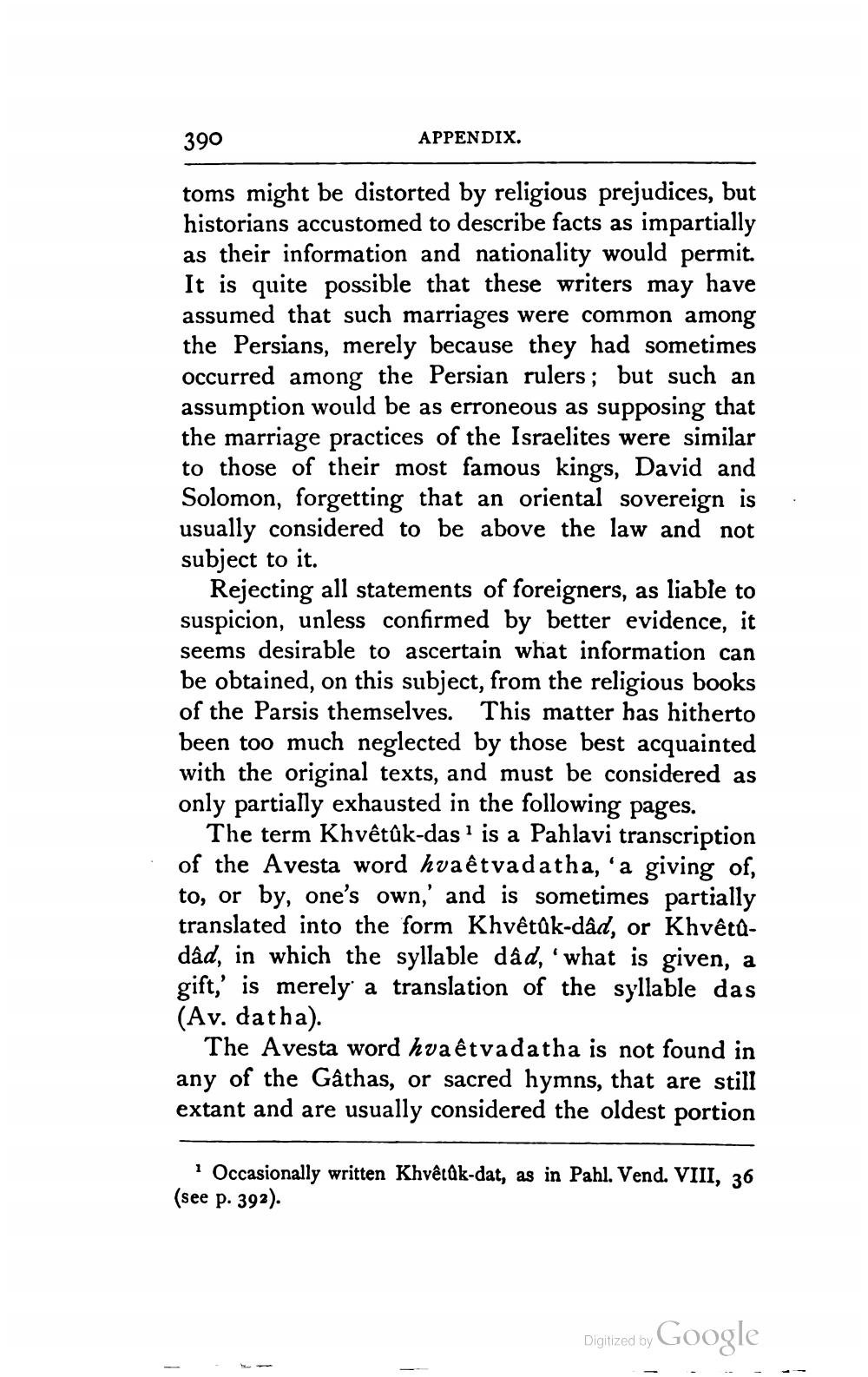________________
390
APPENDIX.
toms might be distorted by religious prejudices, but historians accustomed to describe facts as impartially as their information and nationality would permit. It is quite possible that these writers may have assumed that such marriages were common among the Persians, merely because they had sometimes occurred among the Persian rulers; but such an assumption would be as erroneous as supposing that the marriage practices of the Israelites were similar to those of their most famous kings, David and Solomon, forgetting that an oriental sovereign is usually considered to be above the law and not subject to it.
Rejecting all statements of foreigners, as liable to suspicion, unless confirmed by better evidence, it seems desirable to ascertain what information can be obtained, on this subject, from the religious books of the Parsis themselves. This matter has hitherto been too much neglected by those best acquainted with the original texts, and must be considered as only partially exhausted in the following pages.
The term Khvêtûk-das? is a Pahlavi transcription of the Avesta word hvaêtvadatha, 'a giving of, to, or by, one's own,' and is sometimes partially translated into the form Khvêtāk-dâd, or Khvêtudâd, in which the syllable dâd, 'what is given, a gift,' is merely a translation of the syllable das (Av. datha).
The Avesta word hva êtvadatha is not found in any of the Gâthas, or sacred hymns, that are still extant and are usually considered the oldest portion
i Occasionally written Khvêcûk-dat, as in Pahl. Vend. VIII, 36 (see p. 392).
Digitized by Google




